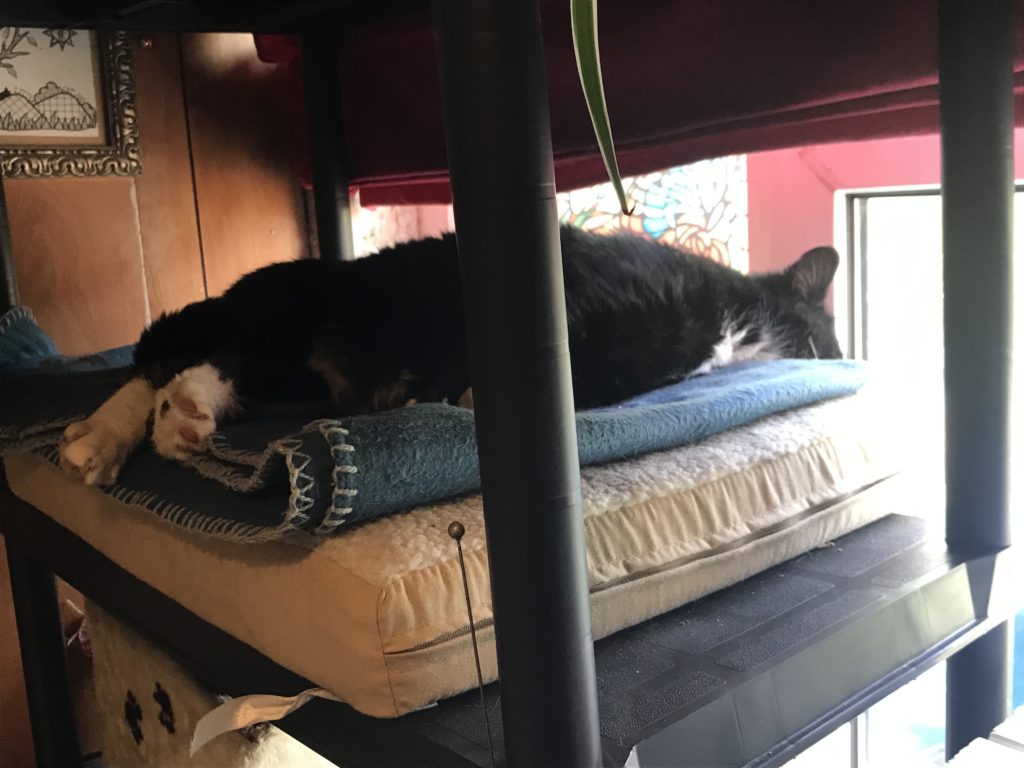A little time…teaching a stray cat to trust.
Since the end of last year, we’d been aware of a young looking black and white cat near our home and in our garden. I first noticed him when he bolted out of our garden shed after I went in there for something. A chat with the local Cats Protection volunteer, resulted in her going door to door on surrounding streets asking if anyone knew where this boy lived. It transpired several people fed him and the information was given, it was believed he’d been abandoned by someone who had moved from the area. He’d been using his food circuit for potentially about 5 years.
Obviously this isn’t ideal, so a plan was put in place to trap and neuter – he was most definitely entire – and take him to a friends home for short term foster, mainly to see how he’d adapt to being around people. Despite the environment having everything he needed, and being quiet so he could get accustomed to people, it wasn’t too successful. He wasn’t aggressive, the people cared for him, but he spent the majority of him time either under the bed until everyone was asleep or sat on the windowsill peering out the window longingly. The decision was made after almost two months to use a technique I’d used prior; so he came back to the territory he knew. He was contained in our outhouse (which isn’t as bad as it sounds, the outhouse is solid brick, and was equipped with cat essentials which included heated beds) for two weeks, and then because he was already familiar with the area, we opened the cat flap for him.
Initially it was a little wobbly, in the sense that he was unsure if the outhouse was “safe” or if it might become containment again. But this morning will be the third morning in a row I’ve been out to look at the outhouse window and find him on a heated bed in there. Long may it continue as we work on his trust of people. Because we already consider Zim a member of our family.
Something that’s often not considered in a general sense is the impact living outside can have on a cat mentally. I’ve mentioned there are different degrees of “domestication” for cats in previous blogs, but recently, International Cat Care have written an informative piece with the hashtag #respectcats. It focuses on recognising how different levels of human interaction will determine what is best for a cat in the psychological sense, and how to respect each cats unique situation. You can read it by following this link:
Some cats may never be open to physical interaction from people. That doesn’t mean we can’t provide resources and protection for them in a way that feels safe. And it certainly doesn’t mean they deserve care any less. It just means the care is provided seemingly a little more on their own terms.

